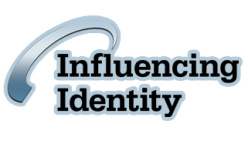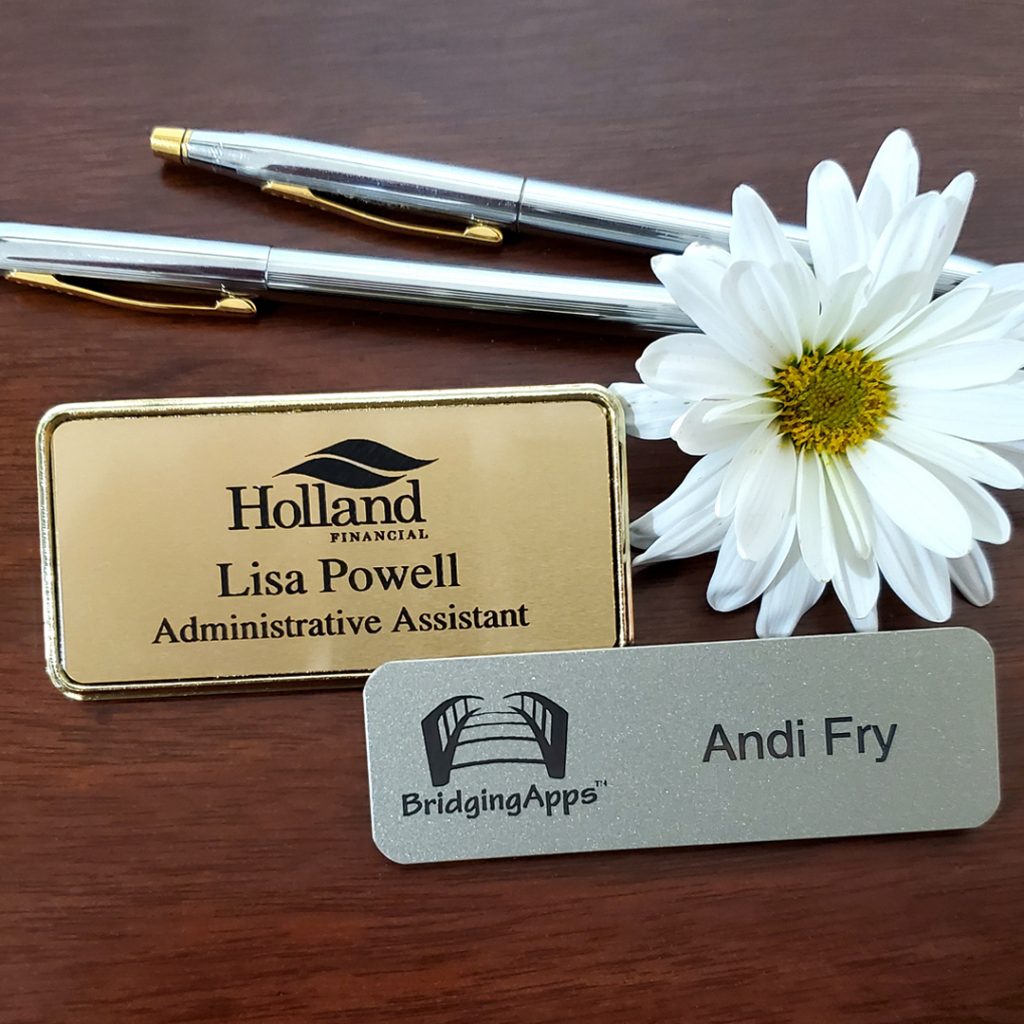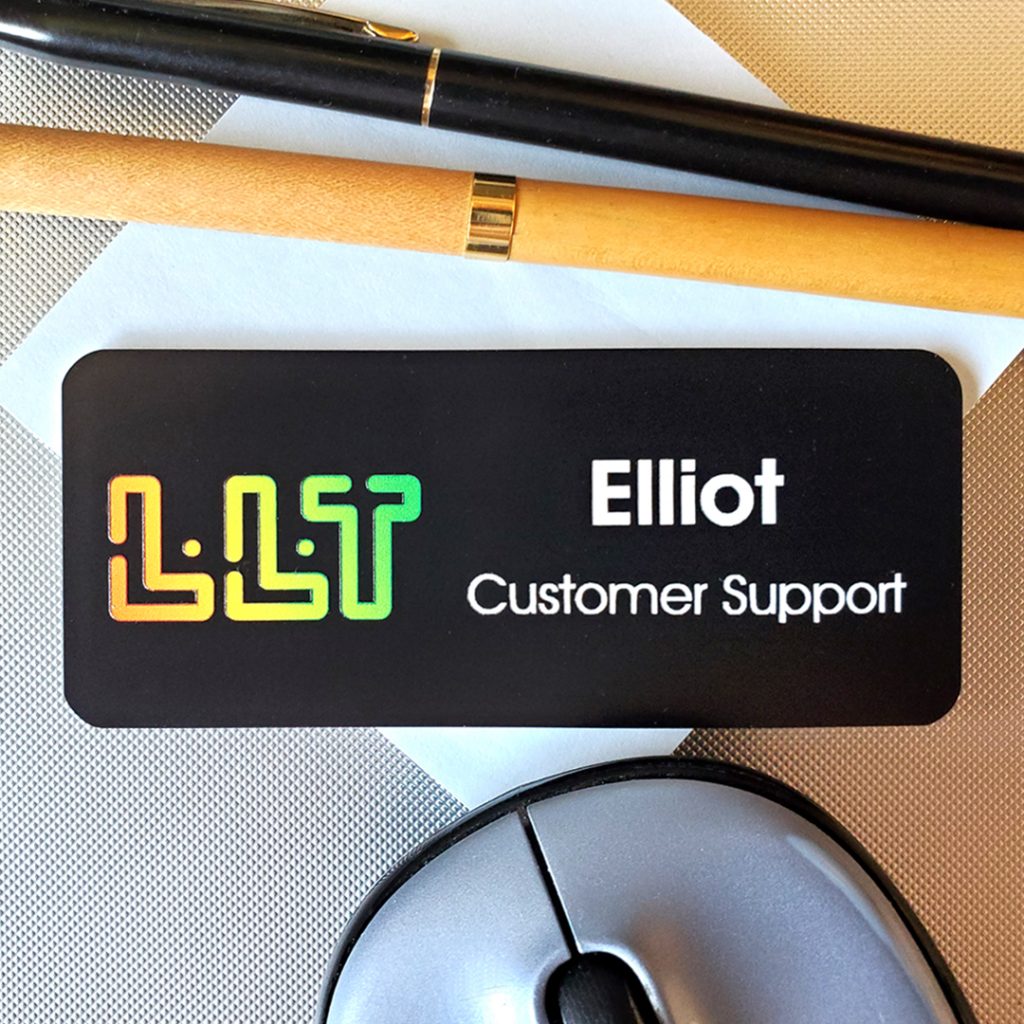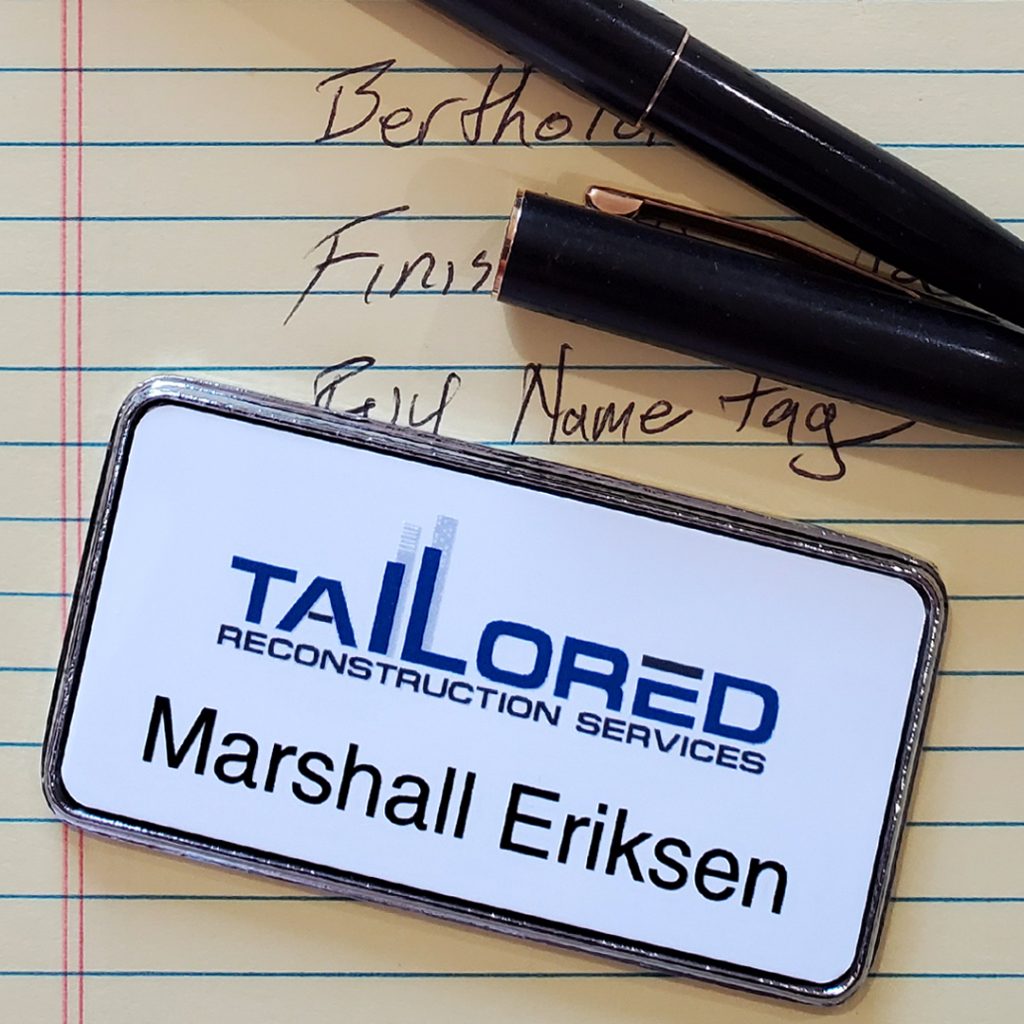Regardless of your work environment, name tags can be a valuable tool for branding, bonding and building relationships. Whether you’re blending smoothies, working in retail or working behind the scenes, wearing a name tag can have endless benefits.
Here are just a few:
Brand Recognition: If all employees wear name tags, your clients or customers are bound to see your company’s logo, and hopefully it will be imprinted in their mind. Even the simplest name tags are effective at creating a brand recognition among your clientele base, and the more places you can put your brand, the better.
Add Personality to Your Brand: Spice it up a little and add some color or shape to your name tags. Custom design a name tag to fit your company or organization’s personality, like making them in the shape of fish for a seafood restaurant. Or add a touch of color to make the name tags vibrant and unforgettable, especially if it matches the upbeat tempo of the work environment.
Increase Professionalism to Your Brand: By wearing sleek, clean and professional name tags, your employees will be able to bring your brand up another level. Name tags say a lot about what your company or organization is like, and if you’re want to be known for respectability and professionalism, the cleaner and more sophisticated the name tag, the better.
Employee Accountability: If a customer or client can see the name of the person helping them next to your company’s logo, your employee will likely feel more accountable for what they say and how they act. They wouldn’t want to get reported, would they?
Differentiate Departments: If there are multiple departments to your business or organization, then name tags can be a way to differentiate between those departments. Try color coding the name tags or ordering name tags in different shapes (rectangle, oval, etc.), but keep a uniform logo and font style.
Learning Names: Is a new employee feeling like the odd one out? Name tags can easily fix that dilemma. If everyone is wearing a name tag, learning names can be painless and effortless. Avoid the awkward, “What’s your name again?” conversation simply by equipping every employee with their own name tag.
For Visitors: Name tags make it easy to know visitors from employees, especially if you have a large staff. Employees will be more helpful if they can point out the visitors, and visitors will be more comfortable if they can see name tags of the employees helping them.
Increase Security: For work environments that demand higher security measures, ID badges are an easy way to make sure that identification is constantly visible. If someone isn’t wearing an ID badge, then they aren’t supposed to be there. And with ID badges, you can manipulate them to let employees through secure areas, or allow them to clock in and out.





